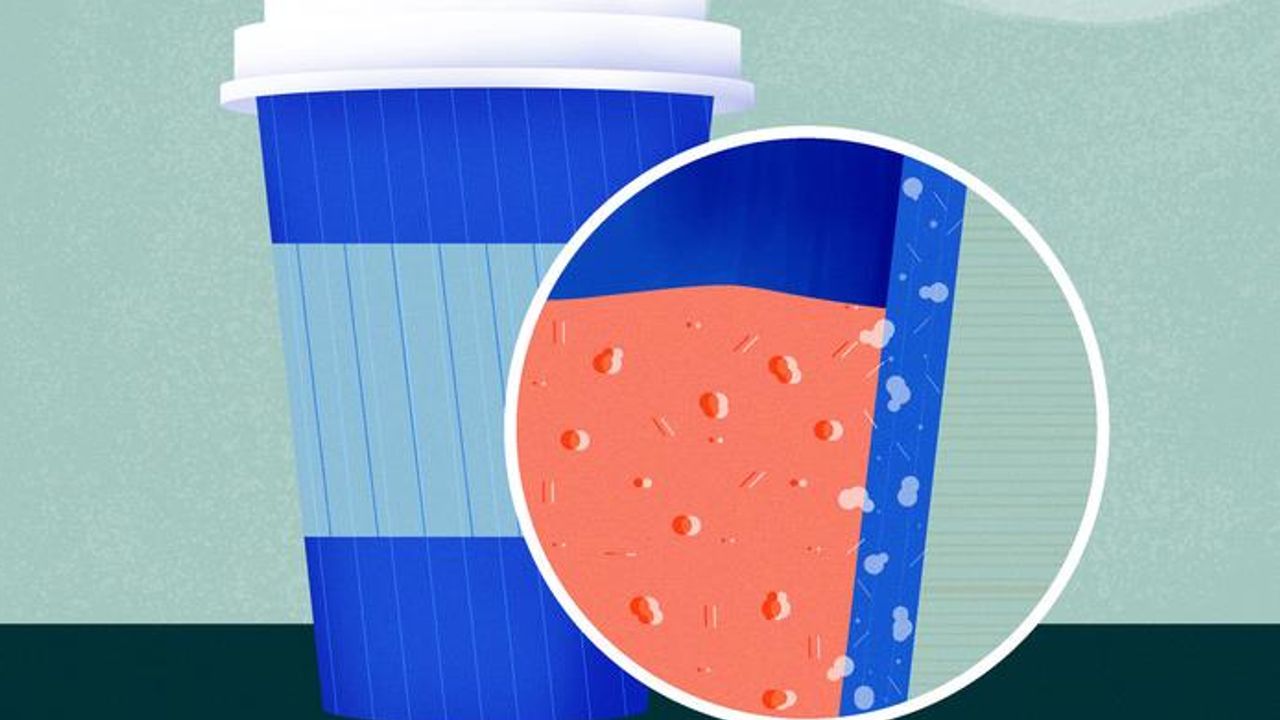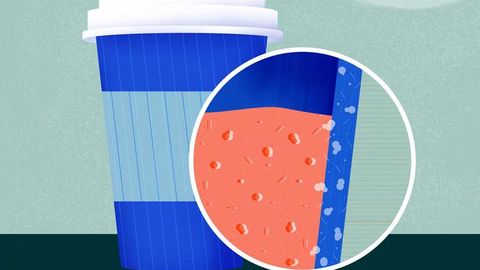
Plastics Release Trillions of Nanoparticles When Exposed to Hot Water

Plastics Release Trillions of Nanoparticles When Exposed to Hot Water
填写下面的表格,我们将向您发送PDF版本的电子邮件“塑料暴露于热水时释放数万亿纳米颗粒”
Plastics surround us, whether it’s the grocery bags we use at the supermarket or household items such as shampoo and detergent bottles. Plastics don’t exist only as large objects, but also as microscopic particles that are released from these larger products. These microscopic plastics can end up in the environment, and they can be ingested into our bodies.
现在,美国国家标准技术研究所(NIST)的研究人员分析了一些广泛使用的消费产品,以更好地了解这些微观塑料。他们发现,当塑料产品暴露于热水中时,它们会释放每升万亿纳米颗粒。
The NIST researchers published their findings in the scientific journal Environmental Science and Technology.
“这里的主要要点是,无论我们在哪里看,都有塑料颗粒。有很多。每升万亿。我们不知道那些对人或动物的健康影响不好。我们只是对他们在那里有很高的信心。” NIST化学家Christopher Zangmeister说。
有许多不同类型的塑料材料,但它们都由由聚合物组成的聚合物组成,这些聚合物由天然或人为的物质组成,这些物质由将大分子连接在一起的大分子组成。科学家在海洋和许多其他环境中发现了这些较大塑料的微观颗粒。研究人员将它们分为两类:微塑料和纳米塑料。
通常认为微型塑料的长度小于5毫米,可以用肉眼看,而纳米塑料则小于三分之一米(一个千分尺),而大多数人甚至都看不到标准显微镜。最近的研究表明,一些消费产品可以容纳液体或与它们相互作用,例如聚丙烯(PP)婴儿瓶和尼龙塑料茶袋,将这些塑料颗粒释放到周围的水中。
In their study, the NIST researchers looked at two types of commercial plastic products: food-grade nylon bags, such as baking liners — clear plastic sheets placed in baking pans to create a nonstick surface that prevents moisture loss — and single-use hot beverage cups, such as coffee cups. The beverage cups they analyzed were coated with low-density polyethylene (LDPE), a soft flexible plastic film often used as a liner.
LDPE衬里的饮料杯在100摄氏度(212华氏度)中暴露于水中20分钟。
To analyze the nanoparticles released from these plastic products, the researchers first needed to determine how to detect them. “Imagine having a cup of water in a generic to-go coffee cup. It could have many billions of particles, and we would need to figure out how to find these nanoplastics. It’s like finding a needle in a haystack,” Zangmeister said.
So, he and his colleagues had to use a new approach. “We used a way of taking the water that’s in the cup, spraying it out into a fine mist, and drying the mist and all that’s left within the solution,” said Zangmeister. Through this process, the nanoparticles are isolated from the rest of the solution.
该技术本身以前已用于检测大气中的微小颗粒。Zangmeister说:“因此,我们不会重新发明轮子,而是将其应用于新区域。”
干燥雾气后,其中纳米颗粒的大小和电荷对其进行了排序。然后,研究人员可以指定特定尺寸,例如约100纳米的纳米颗粒,并将其传递到粒子计数器中。将纳米颗粒暴露于丁醇的热蒸气中,一种酒精,然后迅速冷却。随着酒精的凝结,颗粒从纳米的大小膨胀到微米,使它们更容易检测到。此过程是自动化的,并由计算机程序运行,该程序计算粒子。
研究人员还可以通过将纳米颗粒的化学成分放置在表面上,并使用称为扫描电子显微镜的技术观察它们,该技术使用高能电子和傅立叶转换红外射击拍摄样品的高分辨率图像光谱法,一种捕获气体,固体或液体的红外光谱的技术。
所有这些技术一起使用提供了更全面的纳米颗粒大小和组成图。
In their analysis and observations, the researchers found that the average size of the nanoparticles was between 30 nanometers and 80 nanometers, with few above 200 nanometers. Additionally, the concentration of nanoparticles released into hot water from food-grade nylon was seven times higher compared with the single-use beverage cups.
“In the last decade scientists have found plastics wherever we looked in the environment. People have looked at snow in Antarctica, the bottom of glacial lakes, and found microplastics bigger than about 100 nanometers, meaning they were likely not small enough to enter a cell and cause physical problems,” said Zangmeister.
Zangmeister说:“我们的研究不同,因为这些纳米颗粒确实很小,而且很大,因为它们可能会进入细胞内部,可能会破坏其功能。”
美国食品和药物管理局(FDA)调节碰到我们吃的食物或我们喝水的塑料。该机构已采取标准和安全措施来确定什么安全。FDA的研究人员对这些塑料进行了严格的测试,并测量暴露于热水时损失了多少塑料。例如,FDA确定食品级尼龙(例如茶袋中使用的尼龙)在高温条件下可以安全损失多达1%的质量。在使用新技术的NIST研究中,研究人员发现,质量的十分之一损失了,这显着低于当前的FDA限制,这被认为是安全的。
Zangmeister指出,没有一个常用的测试用于测量LDPE的测试,该测试从咖啡杯等样品中释放到水中,但是有尼龙塑料的测试。这项研究的发现可以帮助制定此类测试。同时,Zangmeister和他的团队分析了其他消费产品和材料,例如织物,聚酯纤维,塑料袋和塑料管中存储的水。
这项研究的发现,结合所分析的其他类型材料的发现,将在该领域开放新的研究途径。“关于该主题的大多数研究都是为了教育科学家而写的。本文将同时进行:教育科学家并进行公众宣传,” Zangmeister说。
Reference:Zangmeister CD,Radney JG,Benkstein KD,KalanyanB。常见的一次性消费者塑料产品在正常使用过程中每升释放数万亿美元以下的100 nm纳米粒子进入水中。环境科学技术。Published online April 20, 2022. doi:10.1021/acs.est.1c06768
本文已从以下内容重新发布材料。注意:材料可能已被编辑为长度和内容。有关更多信息,请联系引用的来源。




